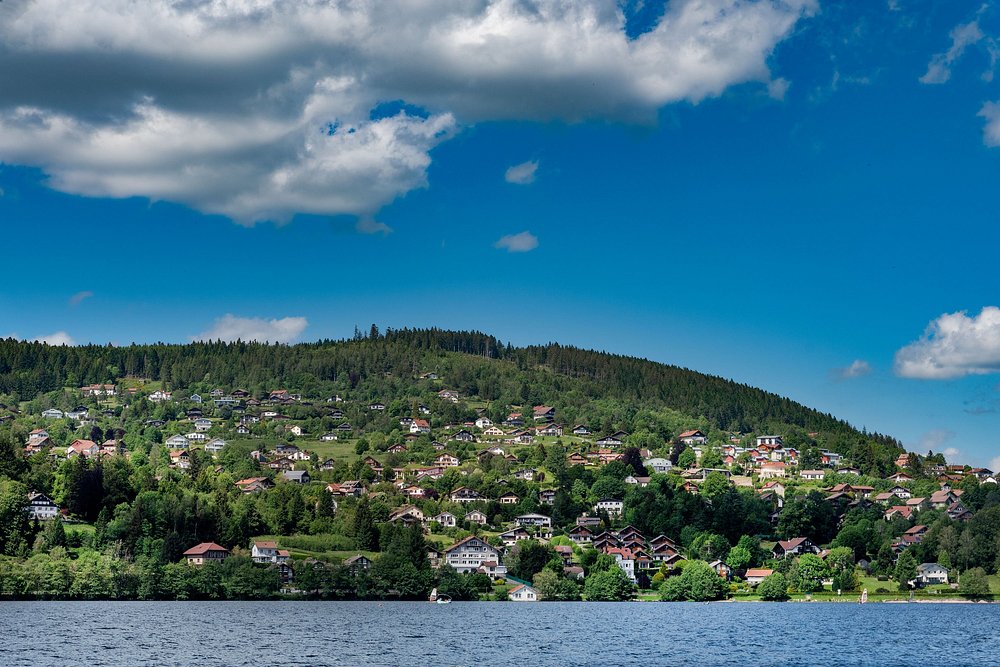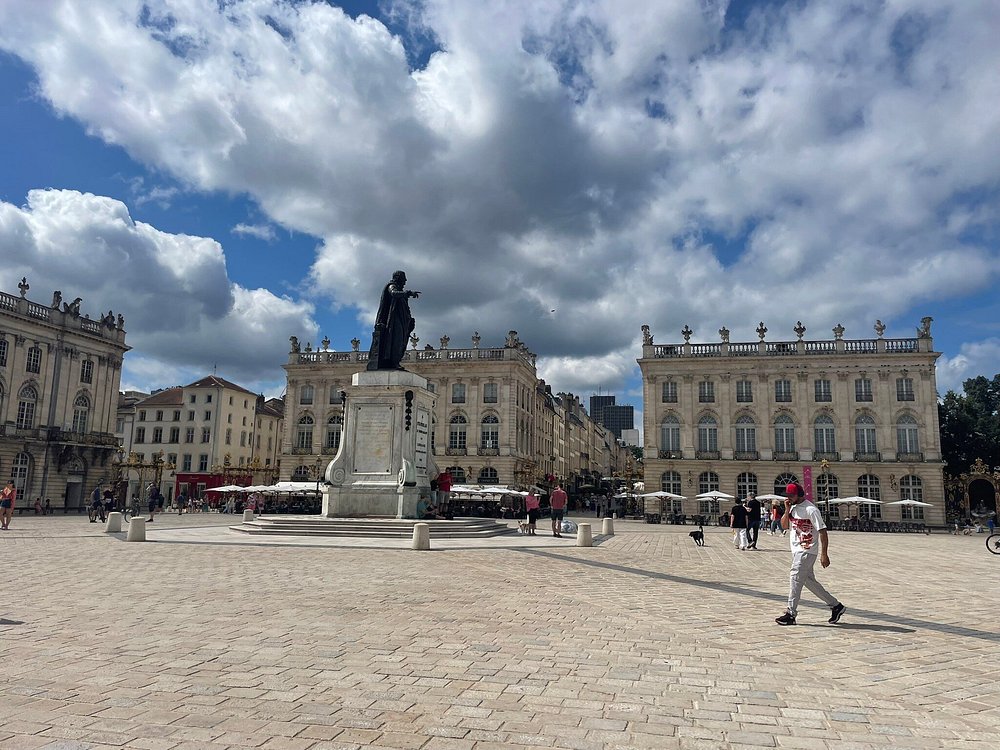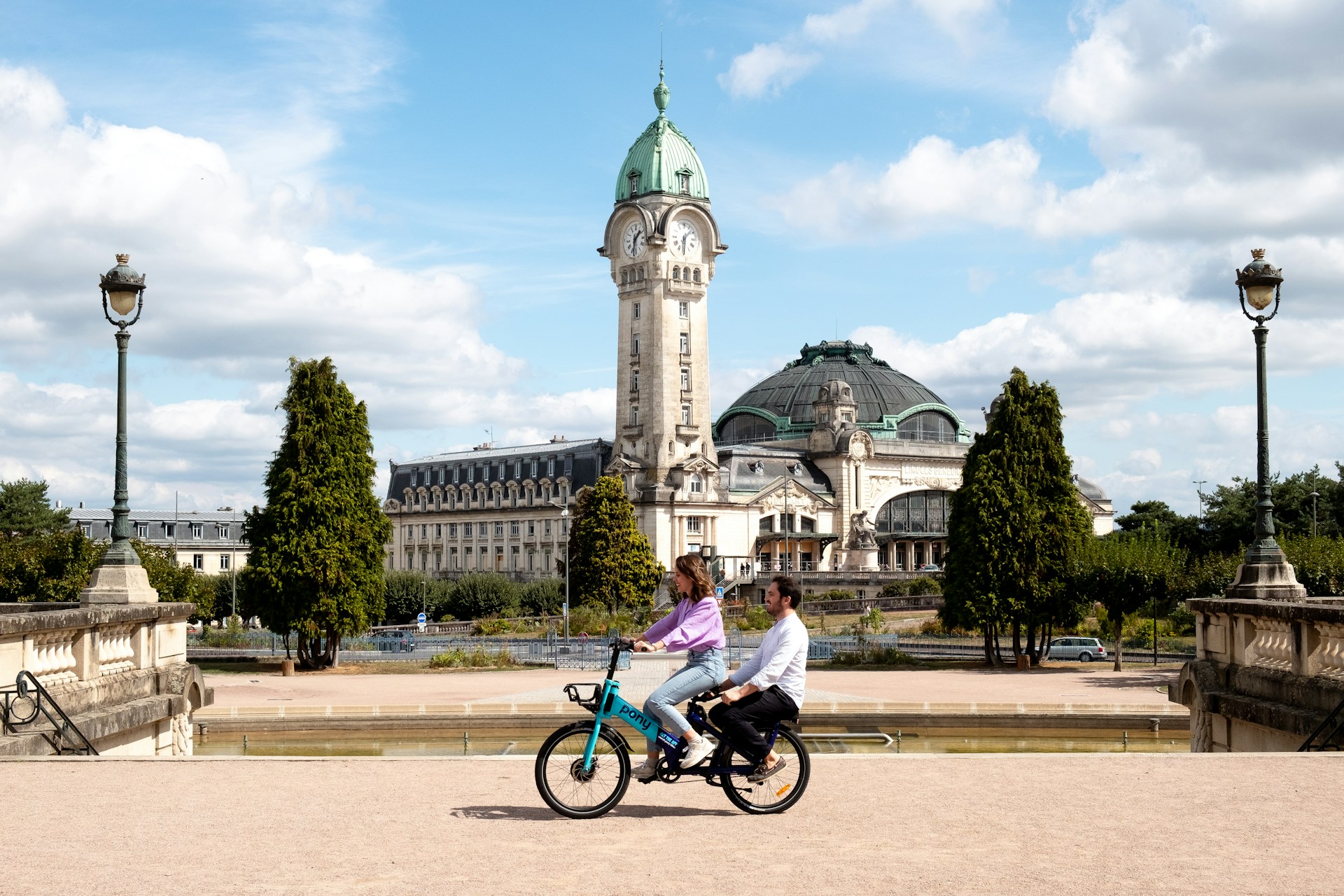Lorraine: A tapestry of history and culture
In the heart of northeastern France, a region of rolling hills, dense forests, and meandering rivers unfolds. This land, shaped by centuries of conflict and creativity, tells a story of resilience and reinvention. From medieval castles to Art Nouveau masterpieces, from battlefields to innovative industries, Lorraine invites visitors to explore its diverse tapestry of experiences.

A Crossroads of Europe
Lorraine's strategic location has long been recognized. For centuries, it has been crossed by armies, traders, and pilgrims. This constant flow of people and ideas has left an indelible mark on the region's culture and architecture. In cities like Nancy and Metz, the influence of German, Flemish, and Italian styles can be seen blending seamlessly with French traditions.
The region's turbulent history is reflected in its many fortifications. From the mighty citadel of Bitche to the UNESCO-listed fortifications of Vauban in Longwy, these structures stand as silent witnesses to Lorraine's strategic importance. Today, they offer visitors a glimpse into the region's complex past and serve as dramatic backdrops for cultural events.
Things to do in Lorraine
Art and Architecture
Lorraine's artistic heritage is celebrated worldwide. The region gave birth to the Art Nouveau movement, and nowhere is this more evident than in Nancy. The city's École de Nancy museum showcases the works of local artists who revolutionized decorative arts at the turn of the 20th century. Strolling through Nancy's streets, visitors are treated to a living museum of Art Nouveau architecture, from the intricate ironwork of balconies to the flowing lines of building facades.
In Metz, the imposing Gothic cathedral of Saint-Étienne dominates the skyline. Known as the "Lantern of God" due to its vast expanse of stained glass windows, it stands as a testament to medieval craftsmanship. The city's blend of architectural styles, from Roman ruins to contemporary designs like the Centre Pompidou-Metz, reflects Lorraine's ability to embrace both tradition and innovation.
A Land of Flavors
Lorraine's culinary traditions are as rich and varied as its history. The region is famous for its quiche Lorraine, a savory tart that has conquered tables around the world. But local gastronomy offers much more. Mirabelle plums, grown in the orchards around Metz, are transformed into delicious tarts, jams, and brandies. The hearty cuisine of the Vosges mountains features smoked meats and mountain cheeses, perfect for cold winter days.
Wine production, while not as famous as in neighboring Alsace, has a long history in Lorraine. The Côtes de Toul and Côtes de Moselle appellations produce light, refreshing wines that pair perfectly with local specialties. Beer, a legacy of the region's German influences, is also widely produced and enjoyed.
Nature and Outdoor Adventures
Beyond its cities and historical sites, Lorraine offers a wealth of natural beauty. The Vosges mountains, with their dense forests and crystal-clear lakes, are a paradise for hikers and nature lovers. In winter, ski resorts like La Bresse-Hohneck attract snow sports enthusiasts from across Europe.
The region's many rivers and lakes provide opportunities for water-based activities. From gentle canoe trips on the Moselle to sailing on Lake Madine, there's an aquatic adventure for every taste. The Parc naturel régional de Lorraine, a vast protected area, showcases the region's biodiversity and offers numerous trails for walking and cycling.
Industrial Heritage and Innovation
Lorraine's industrial past is honored and preserved in various museums and sites across the region. The Iron Museum in Jarville-la-Malgrange tells the story of Lorraine's once-mighty steel industry, while the Salt Museum in Marsal explores the importance of this "white gold" in the region's history.
Today, Lorraine is reinventing itself as a hub for innovation and technology. The Technopôle de Nancy-Brabois is home to numerous startups and research centers, focusing on fields like biotechnology and sustainable development. This blend of industrial heritage and forward-thinking innovation epitomizes Lorraine's ability to honor its past while embracing the future.
A Region of Remembrance
Lorraine's landscape is dotted with memorials and battlefields, testament to the conflicts that have shaped its history. The Verdun battlefield, site of one of the longest and deadliest battles of World War I, serves as a solemn reminder of the cost of war. The Centre Mondial de la Paix in Verdun now works to promote understanding and reconciliation.

In Lorraine, history is not confined to museums; it's a living part of the landscape and the collective memory. From Roman ruins to Renaissance palaces, from Art Nouveau treasures to cutting-edge research centers, the region offers a journey through time and human achievement.
As the sun sets over the rolling hills of Lorraine, casting a golden light on vineyards and forests, one can't help but feel the weight of history and the promise of the future. This region, which has witnessed so much change, continues to evolve and surprise. Whether you're drawn by its rich cultural heritage, its natural beauty, or its innovative spirit, Lorraine offers a multifaceted experience that lingers long after your visit. For those seeking to explore more of France's diverse regions, a trip to Nantes in the Loire Valley could be an excellent complement to your Lorraine adventure, offering yet another perspective on France's rich tapestry of history and culture.
Related articles
Show all
Top 15 things to do in Riquewihr
Tucked away in the heart of Alsace, a fairy-tale village awaits discovery. Half-timbered houses line cobblestone streets, their colorful facades a testament to centuries of history. Vineyards stretch as far as the eye can see, promising world-class wines and unforgettable views. Welcome to a place where time seems to have stood still, yet vibrant experiences abound at every turn.
Riquewihr - FRANCE

Top 15 things to do in Limoges
In the heart of France, a city steeped in history and artistry awaits discovery. Renowned for its porcelain and enamel work, this charming destination offers a blend of cultural richness and natural beauty. From medieval landmarks to modern museums, visitors can be immersed in a world where tradition and innovation coexist harmoniously. Let's explore the top 15 experiences that shouldn't be missed in this captivating French city.
Limoges - FRANCE

Stunning places to visit in France
France is the most visited country in the world! The "Land of Love" certainly has its work cut out to impress worldly travelers, and it does not disappoint.
FRANCE

Visit Europe - Travel more and spend less
Looking to discover the most unique places to visit in Europe? Want to hear more about some of the most beautiful and prestigious coastal destinations in Europe? Ready to create your own legendary experience? Good news - you've come to the right place. In this article, we're going to take a look at some of the very best countries across Europe. Below we'll cover where to go for a city break, a romantic getaway, a family or beach holiday, a cultural or gastronomic trip.
FRANCE

The top 15 things to do in Colmar
Tucked away in the heart of Alsace, a charming town awaits discovery. Half-timbered houses line cobblestone streets, their colorful facades reflected in tranquil canals. The scent of freshly baked kougelhopf mingles with the crisp air of the nearby Vosges Mountains. Here, French and German influences blend seamlessly, creating a unique cultural tapestry that captivates visitors from around the world. Welcome to a place where fairy tales come to life and every corner holds a new wonder to be explored.
Colmar - FRANCE

Top 15 things to do in Mâcon
Nestled along the banks of the Saône River in the heart of Burgundy, a charming town awaits discovery. With its rich history, stunning architecture, and proximity to world-renowned vineyards, this hidden gem offers a perfect blend of culture, gastronomy, and natural beauty. Whether you're a history buff, wine enthusiast, or simply seeking a tranquil escape, the following activities will ensure an unforgettable visit to this picturesque French destination.
Mâcon - FRANCE

 Home
Home Wishlist
Wishlist